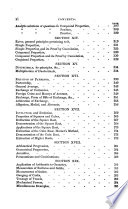 | James Bates Thomson - Arithmetic - 1847 - 426 pages
...324 SIMPLE [SECT. XIV. fieiiviisfrat-tfin. — If four numbers are proportional, we Lave seen th:\t the product of the means is equal to the product of the i-xtrimcs ; (Art. 4!)S:) therefore the pr id let of tile acca ul and t.hv'd terms must be equal to... | |
 | Joseph Ray - Algebra - 1848 - 250 pages
...x= one part; then 55— £= the other. By the question, x : 55 — x : : 2 : 3. Then, since, m every proportion, the product of the means is equal to the product of the extremes, we have 3x=2(55 — x)=110 — 2x 5x=110 x=22, and 55— x=33, as before. Or thus : Let x= one part,... | |
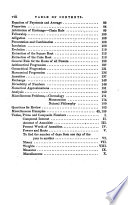 | Pliny Earle Chase - Arithmetic - 1848 - 244 pages
...consequents may, therefore, change places in a variety of ways, the proportion always continuing so long as the product of the means is equal to the product of the extremes. Then, whenever one of the extremes and the two means are given, to find the other extreme, Divide the... | |
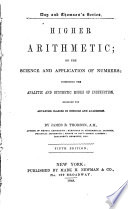 | James Bates Thomson - Arithmetic - 1848 - 432 pages
...is simple proportion proved ? Demonstration.—If four numbers are proportional, we have seen that the product of the means is equal to the product of the extremes; (Art. 498;) therefore the product of the second and third terms must be equal to that of the first... | |
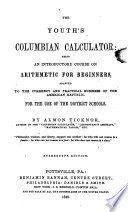 | Almon Ticknor - Arithmetic - 1848 - 124 pages
...means, and the first and fourth terms the extremes : 2 : (4 : : 8) : 16 _4X _2X 32 32 Here we see that the product of the means is equal to the product of the extremes. If 2 pounds of tea cost 4 dollars, •what will 8 pounds cost 1 6. Here the price of the tea is 2 dollars... | |
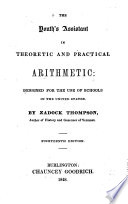 | Zadock Thompson - Arithmetic - 1848 - 184 pages
...product rr the first and fourth equals the product of the second and third, or, m other words, that tlie product of the means is equal to the product of the extremes. 194. In the proportion, 4 : 6 : : 12 : 18, the order of the terms may be altered without destroying... | |
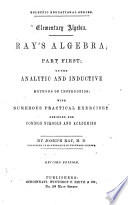 | Joseph Ray - Algebra - 1848 - 250 pages
...we have the following proportions : z+5 : y+5 : : 5 : 6 a:— 5 : y— 5 : : 3 : 4. Since, in every proportion, the product of the means is equal to the product of the extremes, we have the two equations 6(x+5)=5(y+5) 4(x-5)=3(y-5) From these equations, the values of z and y are... | |
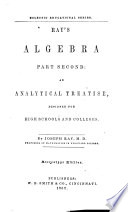 | Joseph Ray - Algebra - 1852 - 408 pages
...5x for the second, which fulfills the first condition. Then, Sx-\-Q : 5*+9 : : 6 : 7. But in every proportion, the product of the means is equal to the product of the extremes. (Arith. Part 3rd, Art. 209.) Hence, 6(5o:+9)=7(3;c+9). 30*4-54=2 la-l-63, 30*— 21*=63— 34, .-.... | |
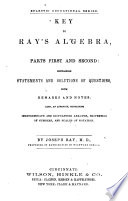 | Joseph Ray - Algebra - 1852 - 366 pages
...100 — 3x= B's gain, and 40x — 200= A's stock. .-. 40ж— 200 : 20ж : ; 3ж : 100— 3ж. Since the product of the means is equal to the product of the extremes, 60x2=(40x — 200)(100— 3x) ; reducing ж'— ïfi!3=— 'Лр- • Whence x=20, hence 3x=60= A's... | |
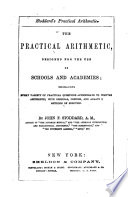 | John Fair Stoddard - Arithmetic - 1852 - 320 pages
...obtained by dividing the third term by the fourth, we can readily deduce the following PROPOSITIONS. , 1. The product of the means is equal to the product of the extremes. Therefore. 2. If the product of the means be divided by one extreme, the quotient will be the other... | |
| |